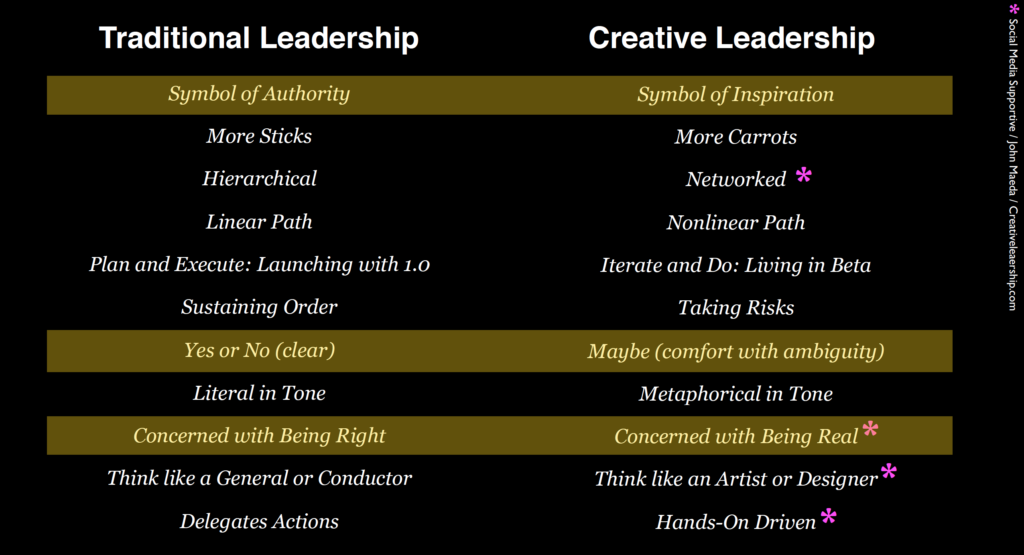
What are you doing today to advance the creative competence of your team, your department and your company? Are you making it easier or harder for others to generate and share ideas? How do others view you? As a catalyst for accelerating projects… or the place they go to die?
Leaders rely on their people to bring their whole person to the table every day. They look for talent, commitment and courage from their people. They get frustrated when these same people hide behind excuses or lose momentum.
Employees, on the other hand, get frustrated with leadership. They want autonomy, with enough feedback and direction to be helpful. They want to see progress and growth in themselves. Last (on this list anyway), they want to have a sense of purpose in the work they do. In his book Drive, Dan Pink identifies these as the three motivators–autonomy, mastery and purpose–that increase performance and satisfaction. Yet, these are missing ingredients in most working environments, and employees aren’t getting what they need from leadership.
Here’s the problem when we talk about leaders and leadership in this way… leadership is too broad a term. It has been misapplied and overused. It means too many different things to people, so it is no longer meaningful. We all have experience with good leaders and bad leaders. But in both situations–good or bad–we still characterize them the same: as leaders.
I don’t want to be cynical, so I will focus on what I call Creative Leaders. These leaders aren’t artists in the strictest definition, but they are creative because they create. They are constructive. They inspire, encourage, facilitate and foster a similar creativity in their people. How do they do this?
They remove the obstacles that hold their people back from growth. When they see it as helpful, they add obstacles that foster growth.
They give their people structure (physically and organizationally) in a way that helps them gain a sense of choice and control in how, when, where and with whom they work.
Creative leaders are storytellers. They share a narrative that communicates the purpose of their organization and helps their people find a sense of purpose in that same story.
Designer/technologist/businessman John Maeda has a more extensive list.

Maeda has been riffing on Creative Leadership since 2009. Maybe this isn’t a new idea, but it is needed today.
We need Creative Leaders today because efficient and productive companies are being toppled by innovative upstarts. Industries are changing before our eyes. We need new and insightful ideas from our people. We need environments that cultivate the right ideas and help us evolve to address the changing marketplace.
This is why Creative Leadership is an idea whose time has come.
And it is an idea I hope to spread.
